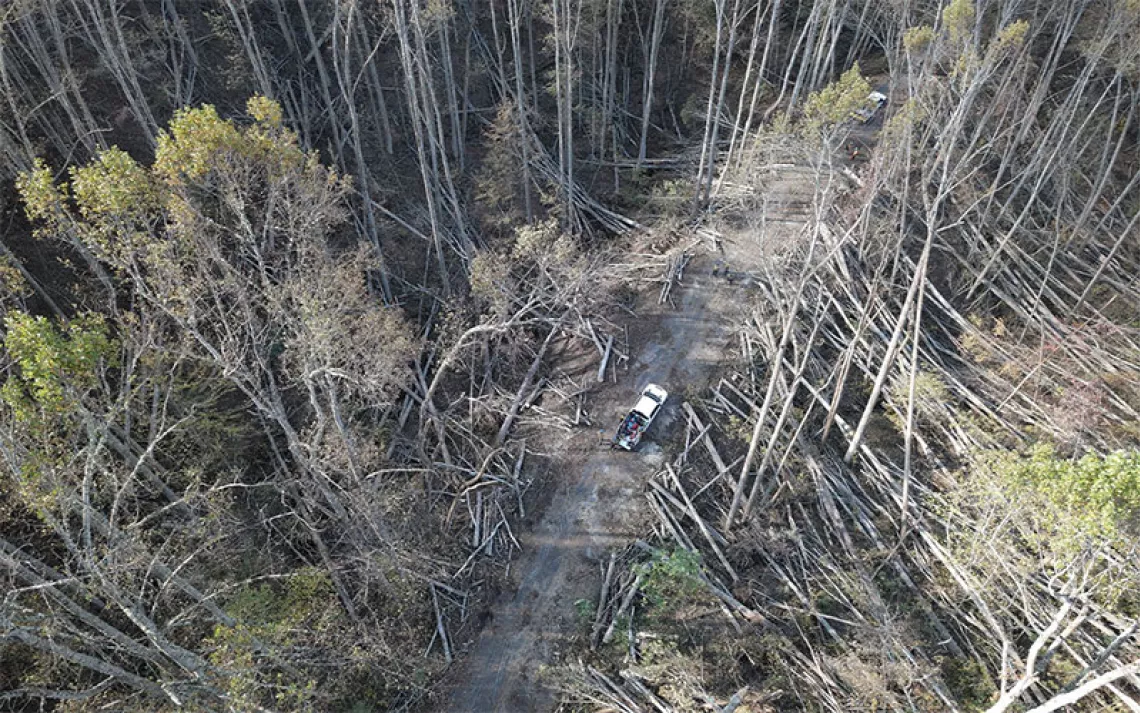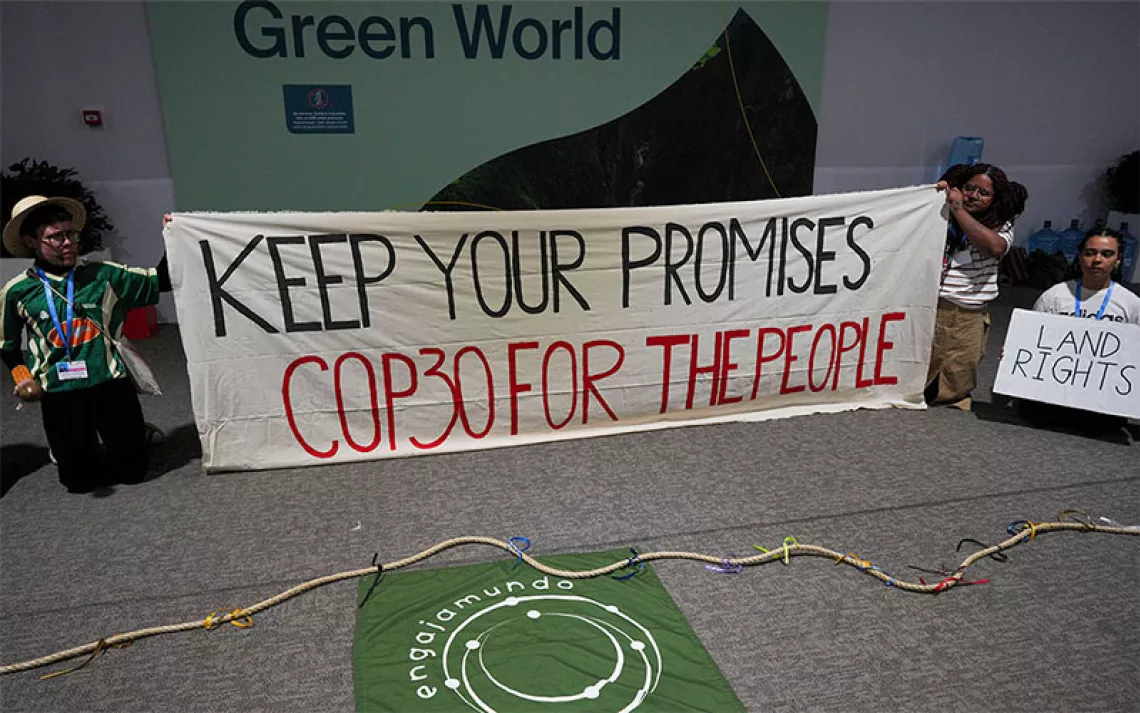What Is the Fossil Fuel Non-Proliferation Treaty?
A novel campaign to stop the spread of oil, gas, and coal gets some attention

Single wind turbine, a coal burning plant with pollution and electricity pylons in the background. | Photo by acilo/iStock
If the world is going to get a handle on the climate crisis, industrial nations have to halt the growth of new oil, gas, and coal projects. Now a campaign to establish a treaty codifying that goal into international law is picking up steam.
The so-called Fossil Fuel Non-Proliferation Treaty is a nascent international campaign by climate organizations and activists to pressure governments to commit to ending new oil, gas, and coal projects. The effort takes inspiration from the 20th-century nuclear weapons treaties that sought to halt the spread of armaments posing an existential threat to life on Earth. As with nuclear weapons, the ongoing and unchecked use of fossil fuels could leave large swathes of the planet uninhabitable.
International cooperation is necessary, but the Fossil Fuel Non-Proliferation Treaty attacks the problem from a different angle compared to the conventional approach taken at annual climate summits. For decades, climate negotiations have focused on emissions-reduction targets, often hinging on vague promises and distant deadlines. Achieving those cuts varied from place to place, and often relied on a smorgasbord of incentives and regulations aimed at bending the emissions curve.
All of that is important, but even as countries build new solar and wind projects with public subsidies, fossil fuel production continues to grow along with it. Governments lay out emissions targets at climate talks in Paris or Sharm el-Sheikh, Egypt, but they go home and greenlight new coal mines, offshore oil projects, and gas-fired power plants.
The Fossil Fuel Non-Proliferation Treaty is based on the logic that the world needs to be cutting both demand and supply simultaneously. “We need both. When it comes to transitioning away from fossil fuels, we need to cut with both arms of the scissors—demand and supply,” Michael Poland, campaign director for the Fossil Fuel Non-Proliferation Treaty Initiative, told Sierra in an email from Sharm el-Sheikh, where this year’s climate talks are taking place.
The treaty concept rests on three pillars. First, new fossil fuel projects should be ruled out. Second, the existing fossil fuel infrastructure and production base should be wound down over time with an eye on the 1.5°C (2.7°F) warming target. Finally, there needs to be a global just transition for countries, communities, and workers that are enmeshed in the existing fossil fuel system so that they can plan for and pivot into a new energy economy.
“The world has used treaties to address major global threats—from nuclear weapons to landmines and ozone-depleting chemicals,” Poland said. “We hope that a Fossil Fuel Non-Proliferation Treaty can draw lessons from these frameworks in order to create an international mechanism to manage a fast and fair transition away from coal, oil, and gas.”
Led by Pacific Island nations, low-income nations, and global civil society groups, the treaty framework gained traction in the years since the 2015 Paris Climate agreement. Today, more than 70 cities and subnational governments have endorsed the Fossil Fuel Non-Proliferation Treaty, including London, Paris, Los Angeles, Lima, Kolkata, Sydney, and the Hawaiian legislature. The campaign also has the support of the European Parliament, the Vatican, and the World Health Organization, along with 101 Nobel Laureates, 3,000 scientists and academics, and roughly 1,800 civil society organizations from around the world.
Ahead of this year’s climate talks, the island Tuvalu became the second nation state to back the treaty, joining its Pacific island neighbor of Vanuatu. Sea level rise threatens to overtake both islands in the future, forcing their citizens to contemplate fleeing. The city of Belém in Brazil also recently joined. And Massachusetts Democratic senator Ed Markey endorsed the treaty while in Egypt for the climate talks in November.
The main objective of the treaty—halting the growth of fossil fuel supplies—comports with the calls of scientists and international organizations. A widely publicized 2021 report from the International Energy Agency laid a pathway to net-zero emissions by 2050. The scenario said that no new coal mines, or any new oil and gas fields, could move forward beyond those already in the works.
“These are not demands being articulated by radical environmentalists but by mainstream international organizations,” Peter Newell, a professor of international relations at the University of Sussex in the UK, and a member of the steering committee for the treaty, told Sierra. “So, it is clear we need to fairly leave large swathes of remaining fossil fuels in the ground if we are serious about tackling climate change.”
There hasn’t been an end to the fossil fuel bonanza. Governments are on track “to produce more than double the amount of fossil fuels in 2030 than what would be consistent with limiting global warming to 1.5°C,” according to the United Nations Production Gap report.
“We’re off track on so many levels,” Michael Lazarus, the US Center director for the Stockholm Environment Institute and a contributor to the UN Production Gap report, told Sierra. He said many countries argue that they can be the “cleanest” fossil fuel producer, or the “last man standing” in a world where fossil fuels decline gradually over time. These rationales, along with political pressure from powerful polluters, keep investments flowing.
“You can't be serious about climate unless we align our energy policies with our climate policies. That gap is there,” Lazarus said.
The war in Ukraine has offered a new justification to build new liquefied natural gas (LNG) export and import terminals, restart idled coal plants, and approve new drilling projects. All of this is being done in the name of energy security, a logic that completely ignores the financial, security, and climate impacts of expanding the fossil fuel system.
A new report from Climate Action Tracker warned that the “goldrush for gas” currently underway in the wake of Russia’s invasion will “seriously compromise” hitting the 1.5°C (2.7°F) climate target.
“We need to be shutting down gas infrastructure, not building more,” Bill Hare, CEO of Climate Analytics, a partner organization of Climate Action Tracker, told Sierra. Hare said that the Fossil Fuel Non-Proliferation Treaty is an effort “to do what governments should already be doing: stop approving and building new fossil fuel production infrastructure.”
Lazarus said policies that target fossil fuel supply should be thought of as compliments to demand-side policies. “It’s not what you lead with. It's not the only thing you do. It's not an alternative to focusing on emissions and demand. It's a necessary compliment,” he said. “How necessary it is depends on circumstance and country context.”
For now, no major fossil-fuel-producing countries or subnational governments have backed the treaty. Lazarus said he doesn’t see the non-proliferation treaty as particularly likely in the short run, but that merely pushing the concept forward can alter the conversation and advance the debate.
Last year’s climate talks ended with a reference to a “phase down” of coal. This year, press reports suggest that India is calling for the COP27 talks to include language on phasing down all fossil fuels, not just coal, over fears that it will get singled out as a big user of coal. The European Union signaled its support for a fossil fuel “phase down.” Whether or not that tweak in language occurs in Egypt remains unclear. But it is an indication that the world is starting to grapple with what to do with the global fossil fuel supply.
Lazarus added that the negotiating process for a treaty would be important because the wind down can be managed, and all types of governments, including those that are major fossil fuel producers, would have a say in how it is implemented.
“I think it's worth seeing if it can have legs,” Lazarus said of the treaty. “If countries recognize that the markets are beginning to disappear for these products, they're going to be interested and making sure that they have a feasible path for managing that wind down.”
 The Magazine of The Sierra Club
The Magazine of The Sierra Club



